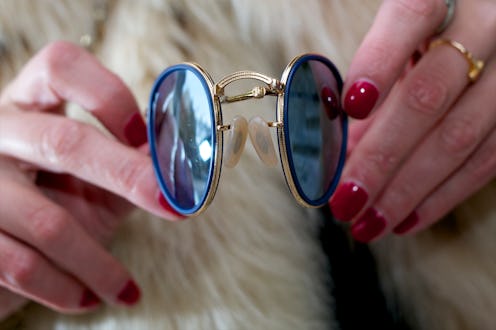Life
6 Places BPA Can Show Up That Aren’t Your Water Bottle

When people think about products that have Bisphenol A, aka BPA, plastic water bottles and reusable food containers are probably the first couple items that come to mind. However, these aren't the only culprits of BPA exposure, by a long shot. Though not everyone knows this, there are many other products where BPA is present — including a whole lot of other common goods that are made from plastics.
BPA has caught the eye of worried scientists and concerned consumers alike. Emerging research over the past decade has shown this industrial chemical — used in everything from plastic food packaging to personal care products — may expose people to a number of health risks. BPA is a compound used to harden plastics that behaves like the sex hormone estrogen. The main concern with BPA is that it can leech into foods or beverages consumed by humans through exposure to plastic containers. As Healthline reported, studies have found that, "due to its estrogen-like shape, BPA can bind to estrogen receptors, and influence bodily processes, such as growth, cell repair, fetal development, energy levels, and reproduction."
However, other studies, like one large one conducted in rats published in 2018, have found that BPA's health risks are minimal; moreover, other research has found that BPA replacements might have their own adverse health effects. The FDA currently still approves the use of BPA in food containers, writing on their site that they believe the chemical is "safe at the current levels occurring in foods."
The truth is, even if you are actively trying to be more conscientious about the chemicals in the products you use, you're still likely being sneakily exposed to BPA. Here are six non-obvious places BPA is present, so you can make more informed choices about what you buy.
1Canned Soups And Pastas
Plastic containers are not the only place BPA is found in your kitchen. CNN reported a 2016 study found that high concentrations of BPA are found in soup and pasta cans, as well as fruit and vegetable canned goods. (It's important to note that the study found no increased exposure to BPA in canned meats or fish.) In fact, the research confirmed that canned goods may be one of the largest risk factors when it comes to BPA exposure.
2Store Receipts
You might want to think twice the next time you ask for a copy of your receipt. A small study published in January 2019 estimated that 90 percent of purchase receipts, made of "thermal paper," contained BPA. Further, while the Center For Environmental Health reported in 2016 that many major companies were opting to rid receipts of BPA, it was replaced with another chemical called BPS — which, like BPA, is an endocrine receptor that poses health risks.
3Sunglasses
Style, comfort, and UV protection are probably the three largest factors you weigh when picking out sunglasses, but searching for a pair that's also BPA-free may be worthwhile. According to Vision Care Product News, lenses made from polycarbonate likely contain BPA. Experts are still unsure of how much exposure these sunnies can cause, since, of course, you're not drinking water out of them. However, it never hurts to err on the side of caution.
4Medical Devices
As MedPage Today reported in 2009, the FDA found BPA was commonly present in medical devices used during procedures. Though the research didn't pinpoint the exact impact of this toxic chemical, they hypothesized that BPA exposure was likely higher in people who had routine procedures, and in procedures where the plastic devices containing BPA were heated.
5Toilet Paper And Paper Towels
Toilet paper, and paper towels — yes, even the eco-friendly recycled brands — may contain traces of BPA, according to a large study from 2011. However, the research also noted that a majority of BPA exposure from paper products still primarily comes from register receipts.
6Boxed Wine
Boxed wine is a favorite among people who like their wine to be affordable and available in large quantities. However, as an article in Scientific American explained, "The[boxed wine] bags are made out of #7 plastic. [...] As more and more research comes to light, many environmentalists and public health advocates are warning consumers to avoid storing any food or drinks in containers made out of #7 plastic, as there is likelihood that BPA could be part of the mix."
7
Completely avoiding BPA is close to impossible, at least as long as the chemical is cleared by the FDA. However, getting to know what products may contain BPA, and paying attention to labels on the plastic items you use, can help you steer clear of this potentially harmful chemical.